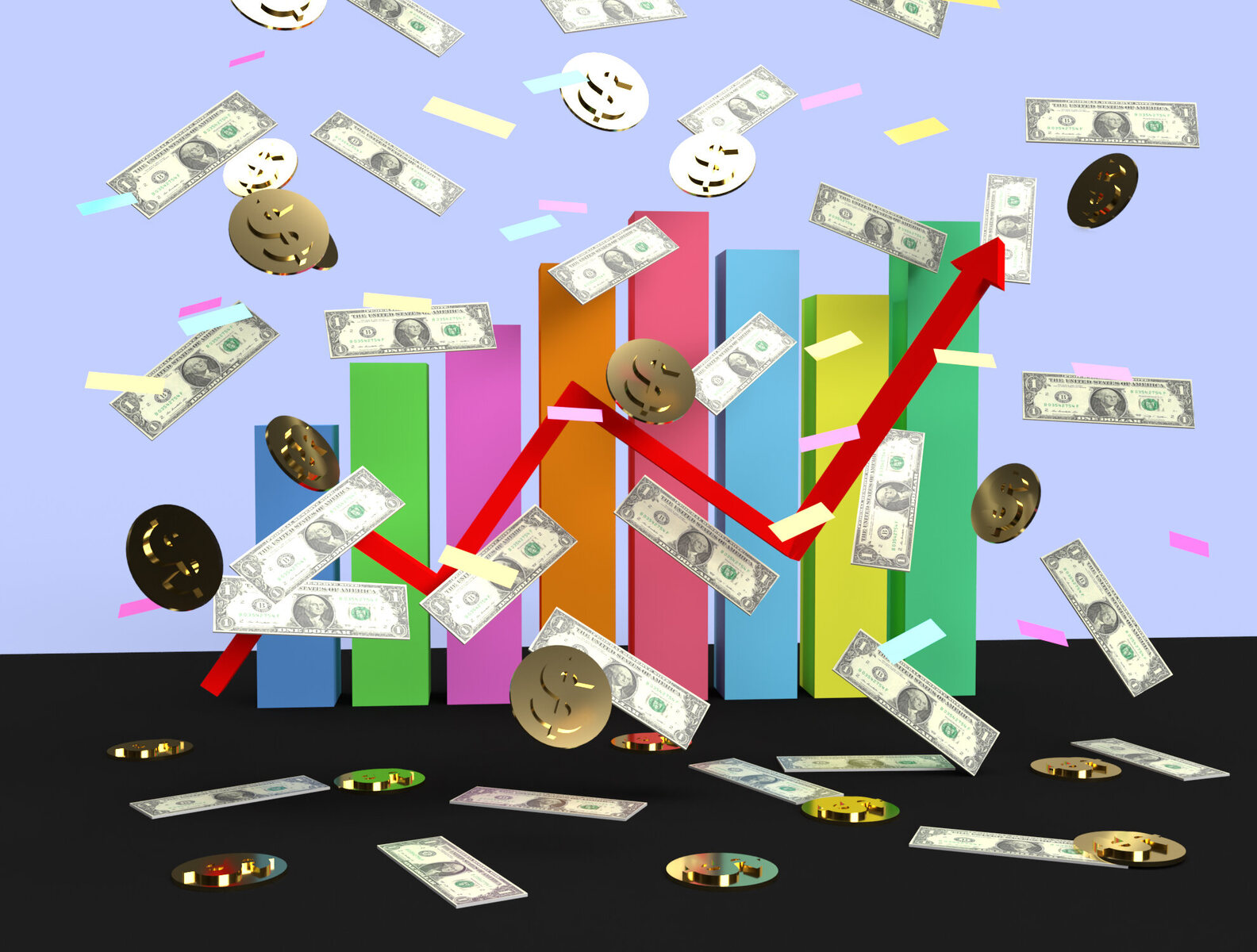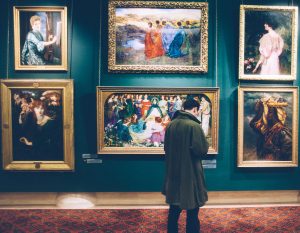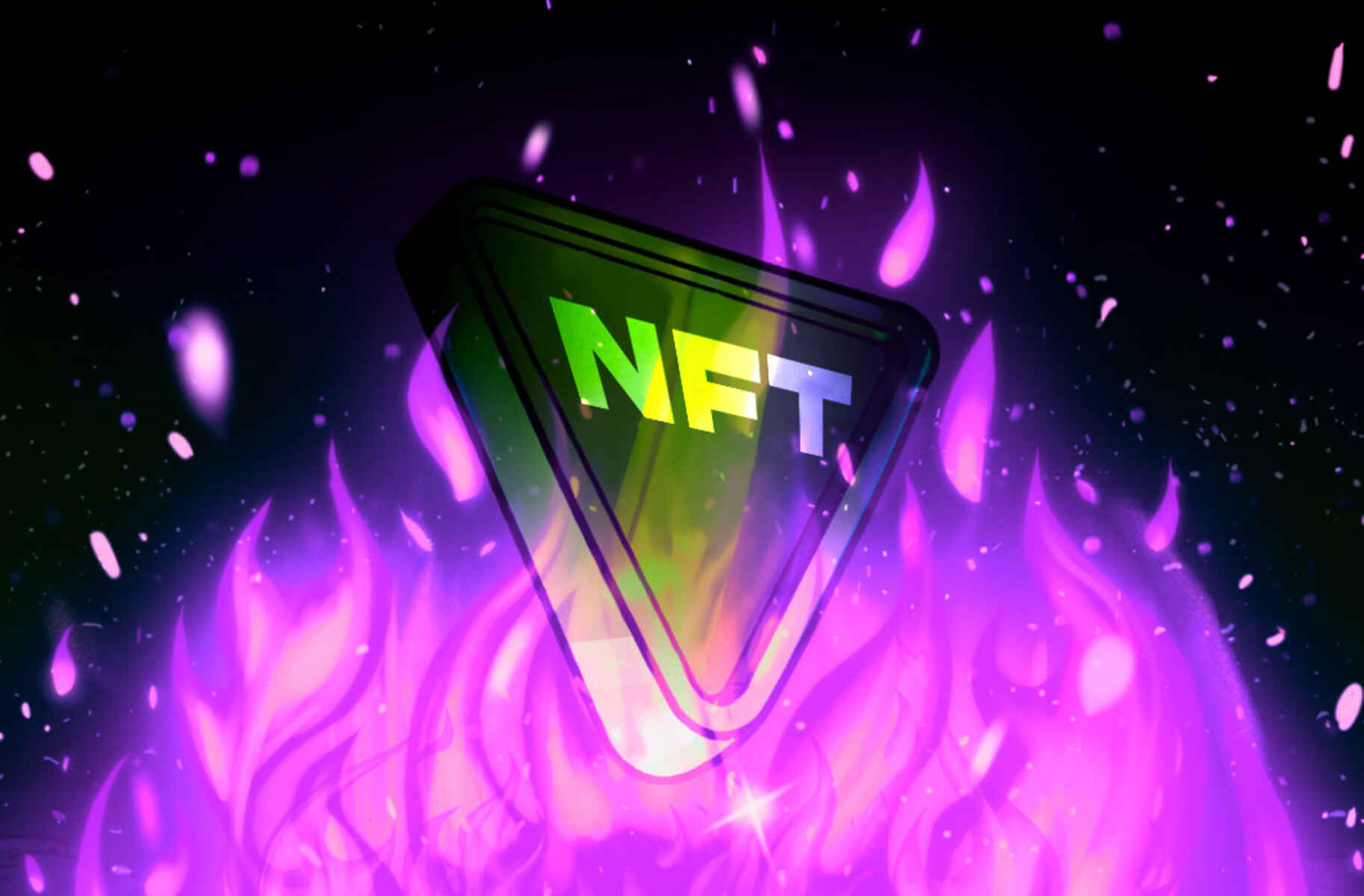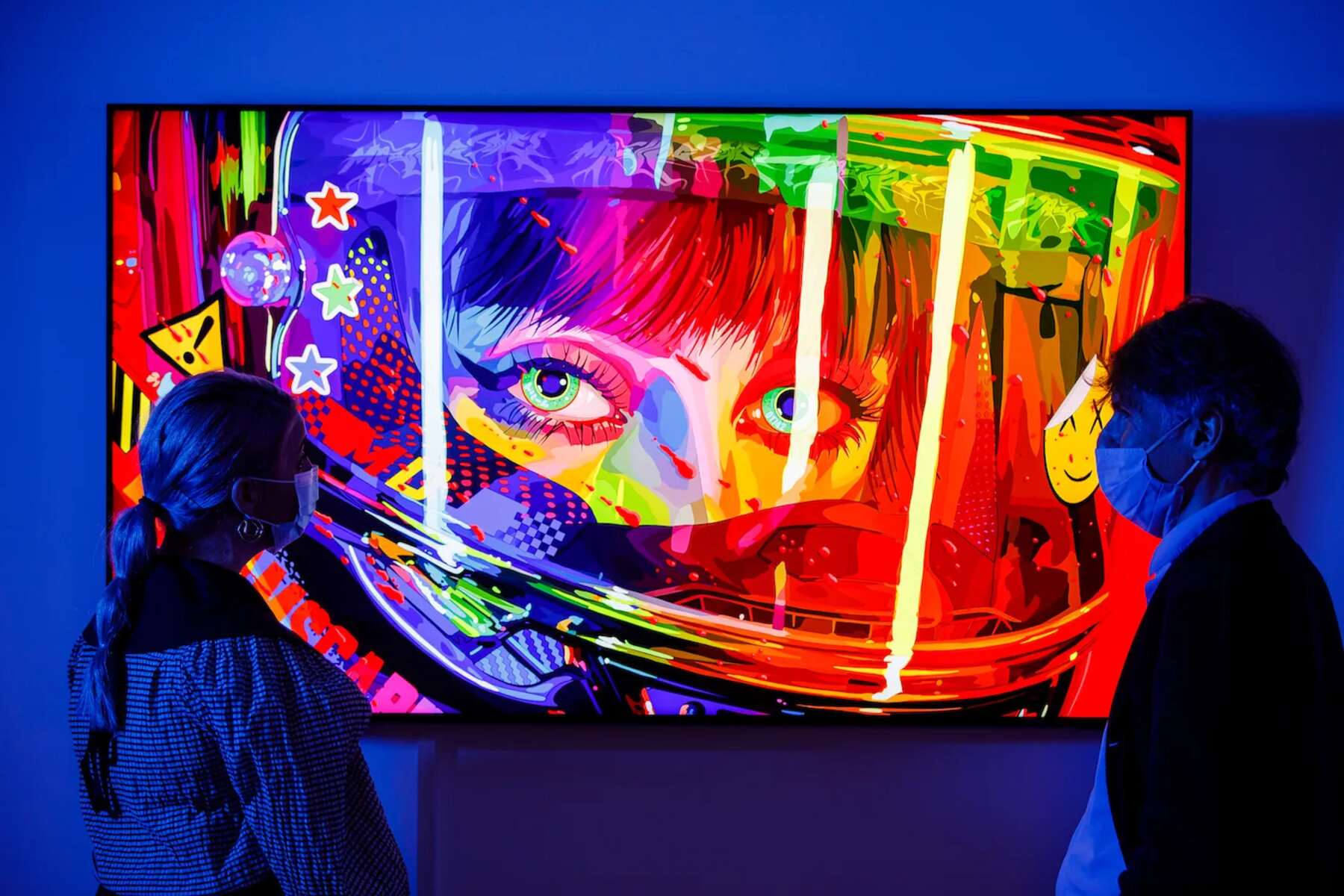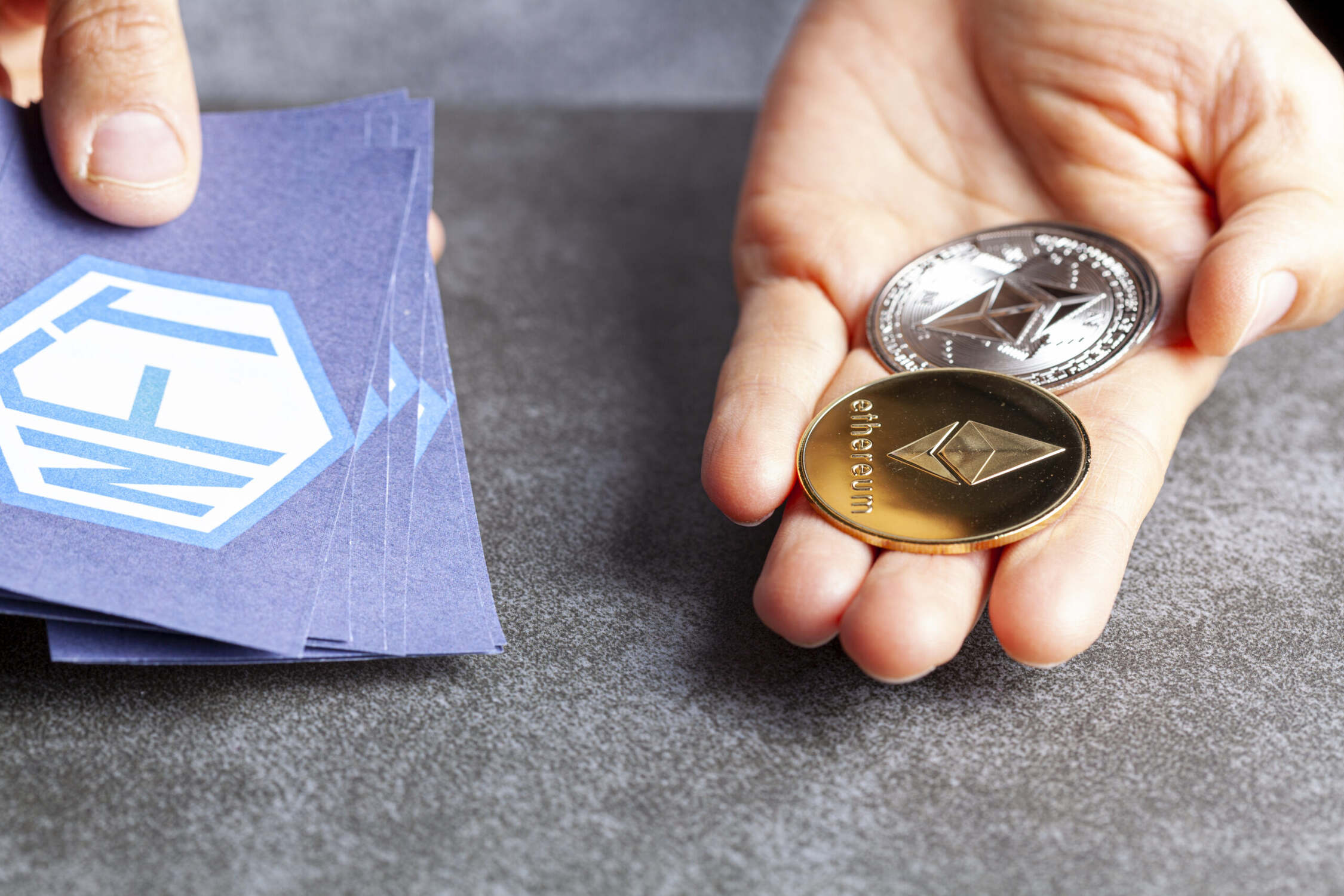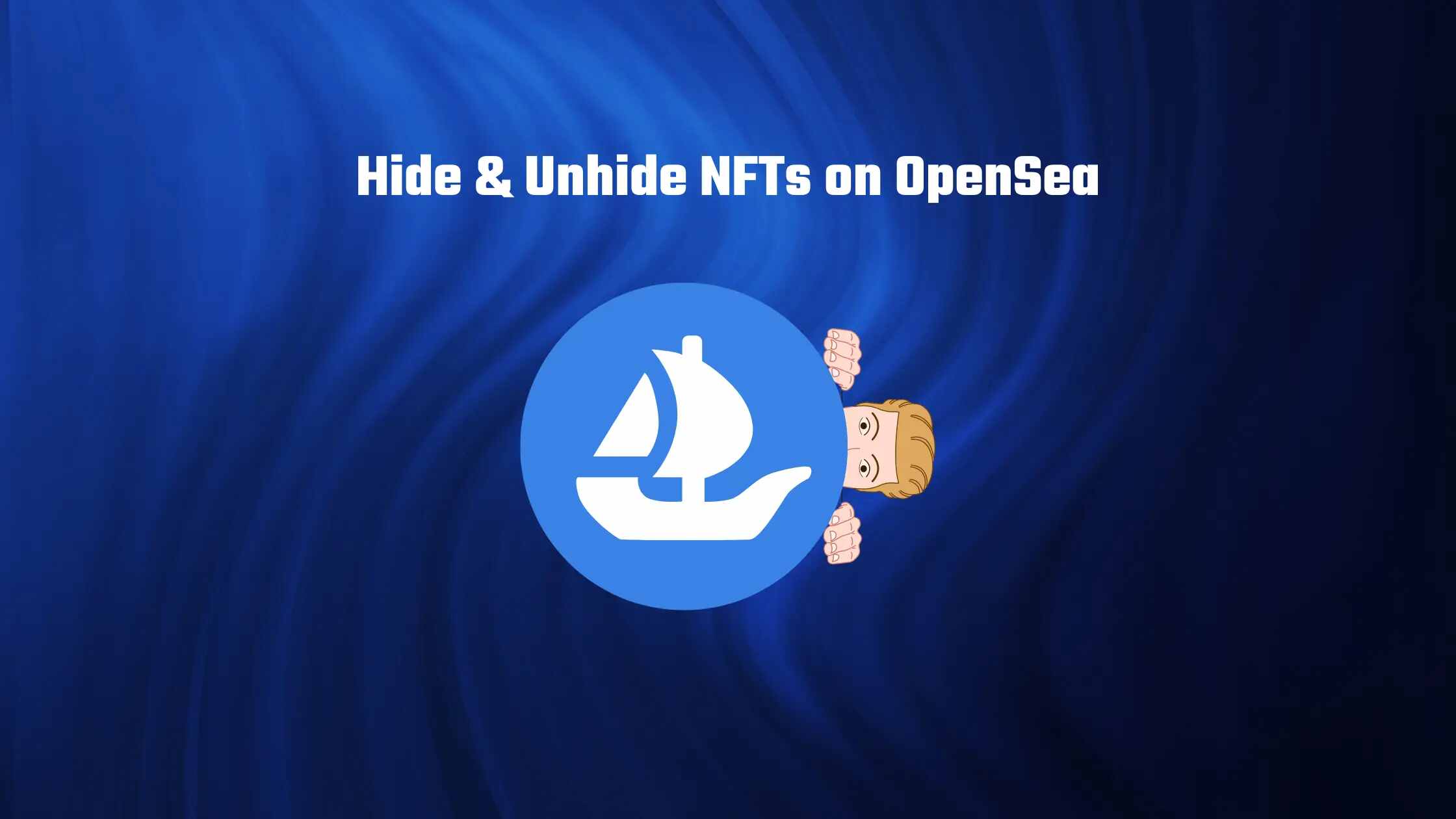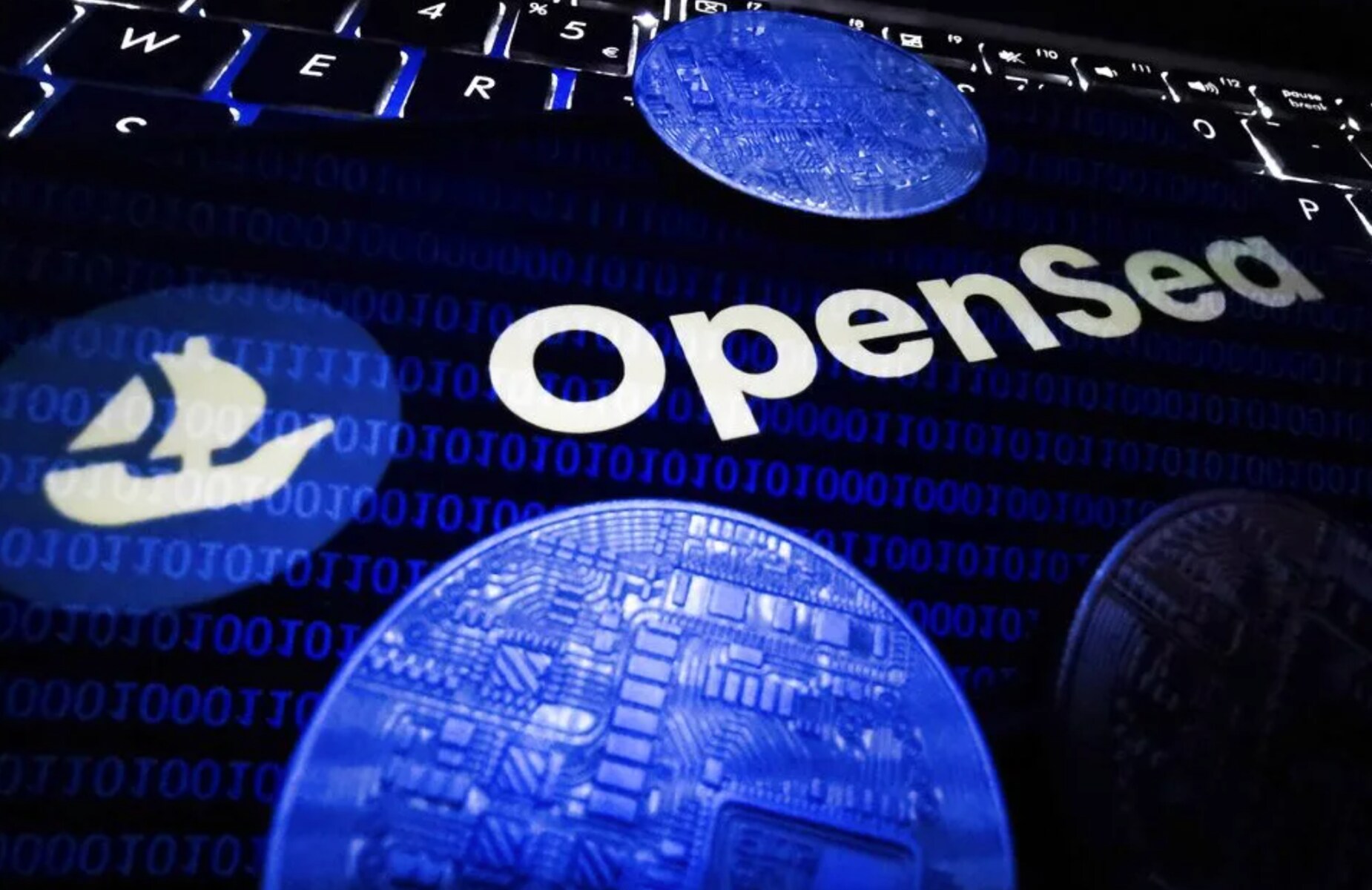Introduction
Welcome to the world of non-fungible tokens, or NFTs, where digital assets are bought, sold, and owned. In recent years, NFTs have gained significant attention and popularity, captivating both the art community and the general public. But what exactly is an NFT, and why would anyone buy one?
An NFT is a type of digital asset that represents ownership or proof of authenticity of a unique item or piece of content, such as artwork, music, videos, collectibles, virtual real estate, and more. Unlike cryptocurrencies like Bitcoin or Ethereum, which are fungible and can be exchanged on a one-to-one basis, NFTs are indivisible and unique, making them valuable and highly sought after by collectors and enthusiasts.
So what sets NFTs apart from traditional ownership or copyright? The key lies in understanding the concept of scarcity in the digital world. In a digital realm where content can be easily duplicated and shared, NFTs provide a way to establish true scarcity and ownership. This is achieved through the use of blockchain technology, a decentralized and transparent system that verifies and records ownership, making it virtually impossible to counterfeit or manipulate the provenance of an NFT.
The rise of NFTs can also be attributed to the growing interest in cryptocurrency and blockchain technology. As the world becomes more digital, people are seeking new ways to invest, show ownership, and engage with content online. NFTs provide a bridge between the physical and digital realms, offering individuals the opportunity to own and trade unique digital assets like never before.
One of the most exciting aspects of NFTs is their potential in revolutionizing the art world. Digital art collectibles have gained immense popularity, with artists now able to showcase their work to a global audience and monetize their creations directly. This has opened up new avenues for artists to gain recognition, reach a wider audience, and bypass traditional gatekeepers in the art industry.
So, why would anyone buy an NFT? The answer lies in the unique benefits and opportunities that NFT ownership brings. In the following sections, we will explore these advantages in more detail, including investment potential, intellectual property considerations, and the challenges and risks associated with the NFT market.
What is an NFT?
An NFT, or a non-fungible token, is a type of digital asset that represents ownership or proof of authenticity of a unique item or piece of content. While cryptocurrencies like Bitcoin or Ethereum are fungible, meaning that each unit is interchangeable and has the same value, NFTs are indivisible and unique, giving them intrinsic value beyond their monetary worth.
An NFT works by utilizing blockchain technology, a decentralized and transparent system that verifies and records ownership. Each NFT is embedded with a unique identifier that distinguishes it from any other token in existence, making it impossible to duplicate or counterfeit.
NFTs can represent a wide range of digital assets, including artwork, music, videos, collectibles, virtual real estate, and even tokenized representations of real-world assets. They can be bought, sold, and owned, just like physical assets in the offline world, but in a purely digital environment.
What makes NFTs particularly intriguing is their ability to establish true scarcity in the digital realm. In a world where content can be easily copied, downloaded, and shared, NFTs provide a mechanism to attribute unique ownership to digital items. This means that owning an NFT of a digital artwork, for example, gives you the sole claim to that specific piece, despite it being potentially viewable by millions on the internet.
With NFTs, the concept of provenance comes into play. Provenance refers to the origin or history of an artwork or item, and it is often a significant factor in determining its value. NFTs provide a transparent and immutable record of an asset’s ownership history, making it easier for artists, creators, and collectors to prove the authenticity and ownership of the digital items they possess.
It’s important to note that owning an NFT does not grant you copyright or intellectual property rights over the underlying content. The ownership is primarily symbolic and attests to your ownership of a unique digital item. However, some creators may choose to include additional rights or benefits with their NFTs, such as special access, rewards, or royalties.
In the next section, we will delve deeper into the concept of scarcity in the digital world and how NFTs have revolutionized the notion of owning and trading digital assets.
The Concept of Scarcity in the Digital World
In the digital world, where content can be easily copied, downloaded, and shared, the concept of scarcity has been a longstanding challenge. Unlike physical assets, such as a painting or a rare collectible, digital items often lack the inherent scarcity that contributes to their value.
However, with the advent of NFTs, scarcity in the digital realm has taken on a new dimension. NFTs provide a unique solution by establishing true scarcity, allowing creators and collectors to assign unique ownership to digital assets.
This concept of scarcity is achieved through the use of blockchain technology. A blockchain is a decentralized and transparent ledger that records all transactions and ownership changes. When an NFT is minted, or created, it is assigned a unique token identifier that is recorded on the blockchain. This record serves as irrefutable proof of ownership and cannot be altered or tampered with.
While the content of an NFT can be viewed, shared, and enjoyed by anyone, the ownership of that specific NFT is restricted to the individual who possesses it. This sense of exclusivity and scarcity adds value to the NFT, making it desirable and sought after by collectors and enthusiasts.
For creators, the concept of scarcity plays a crucial role in establishing value for their digital creations. The limited nature of NFTs can drive up demand, giving artists the opportunity to monetize their work in ways that were not previously possible in the digital space. Artists can create limited editions or unique pieces, assigning each one its own NFT, thereby ensuring that their work retains its exclusive nature.
Collectors, on the other hand, are attracted to NFTs because they provide a means of owning and displaying unique digital assets. They can showcase their collections and assert their ownership, even as the digital items are shared and enjoyed by others across the internet. The scarcity of NFTs adds a layer of prestige and status to their digital possessions.
The concept of scarcity also extends beyond the art world. Other digital assets, such as virtual real estate in virtual reality environments, rare gaming items, and even tokenized representations of real-world assets like real estate or luxury goods, can be represented as NFTs. These NFTs embody the scarcity and exclusivity associated with their physical counterparts, amplifying their desirability and value.
As the world becomes increasingly digital, the concept of scarcity in the digital realm becomes more relevant. Whether it’s artists reclaiming control and value over their digital creations, or collectors seeking one-of-a-kind digital items, NFTs have opened up new possibilities and redefined the notion of scarcity in the digital world.
Understanding Cryptocurrency and Blockchain Technology
To truly grasp the significance of NFTs, it is essential to understand the underlying technologies that enable their existence: cryptocurrency and blockchain.
Cryptocurrency is a digital or virtual form of currency that utilizes cryptography for secure transactions and control the creation of new units. Bitcoin, created in 2009, was the first decentralized cryptocurrency and remains one of the most well-known. Ethereum, another prominent cryptocurrency, is particularly relevant to the world of NFTs, as it introduced the concept of smart contracts.
Smart contracts are self-executing agreements with terms written directly into code. These contracts are executed automatically when certain conditions are met. They serve as the backbone of the NFT market, as they allow for the creation, ownership, buying, and selling of NFTs in a secure and transparent manner.
Underlying the technology of cryptocurrencies and smart contracts is blockchain. A blockchain is a decentralized and transparent ledger that records all transactions and ownership changes. It consists of a network of computers, known as nodes, that collaborate to validate and record each transaction on the blockchain.
When a transaction occurs, it is bundled together with other transactions and added to a block. Each block is linked to the previous block, forming a chain of blocks. This chain of blocks, hence the name blockchain, ensures the immutability and integrity of the recorded data, making it practically impossible to alter or manipulate past transactions.
The decentralized nature of blockchain technology ensures that there is no central authority controlling the network. This decentralization, combined with cryptographic security measures, creates a high level of trust and transparency in the system, making it ideal for facilitating secure and verifiable ownership of digital assets like NFTs.
Every NFT minted is assigned a unique token identifier and recorded on the blockchain. This identifier serves as a digital certificate of authenticity and ownership. It allows anyone to verify the legitimacy of an NFT, establish its ownership history, and ensure that it is not a counterfeit or a duplicate.
Blockchain technology has revolutionized various industries, offering new ways to transact, store information, and establish trust. In the context of NFTs, blockchain provides a secure and immutable infrastructure that guarantees the integrity and provenance of digital assets.
As the world continues to explore the potential of cryptocurrencies and blockchain technology, NFTs stand at the forefront of innovation, transforming the way we perceive ownership, value, and scarcity in the digital realm.
The Rise of Digital Art Collectibles
An exciting and transformative aspect of NFTs is their impact on the art world, particularly in the realm of digital art collectibles. NFTs have opened up new possibilities for artists, collectors, and art enthusiasts alike, revolutionizing the way we create, showcase, and acquire art.
Traditionally, the art market has been dominated by physical art forms such as paintings, sculptures, and prints. However, the rise of digital art collectibles has challenged this conventional notion, ushering in a new era of artistic expression and ownership in the digital realm.
Digital artists can now create unique pieces of artwork that exist purely in digital format. These digital artworks can take various forms, including illustrations, animations, virtual reality experiences, and more. By minting their creations as NFTs, artists can establish provenance and ownership, ensuring the uniqueness and exclusivity of their work.
One significant advantage of digital art collectibles is the ease with which they can be shared and accessed by a global audience. Unlike physical artworks, which are often limited to a specific location or gallery, digital art can be instantly viewed and enjoyed by anyone with an internet connection. This democratization of art allows artists to reach a wider audience and gain recognition on a global scale.
Moreover, NFTs enable artists to monetize their creations directly. In the past, artists relied on galleries, agents, and middlemen to sell their work, which often resulted in a significant reduction in revenue. With NFTs, artists can sell their digital artworks directly to collectors, eliminating the need for intermediaries and retaining more control over the pricing and distribution of their creations.
Collectors and art enthusiasts are also drawn to digital art collectibles because of the unique ownership experience they offer. Owning an NFT of a digital artwork provides a sense of exclusivity and prestige, even though the artwork may be viewable online by others. Collectors can proudly showcase their digital collections, asserting their ownership and supporting their favorite artists.
Additionally, owning digital art collectibles offers a level of accessibility and portability that physical artworks cannot match. Digital art can be viewed on a variety of devices, from smartphones and tablets to computer screens and digital frames. Collectors can easily access their collections and appreciate the artwork from the comfort of their own homes or even on the go.
The rise of digital art collectibles has spurred a vibrant and dynamic market, with artists exploring new creative possibilities and collectors seeking to acquire unique and valuable digital assets. As the art world continues to adapt and embrace the digital revolution, NFTs and digital art collectibles hold the potential to redefine artistic expression, ownership, and the very nature of what it means to be an art collector.
Benefits of Owning an NFT
Owning an NFT (non-fungible token) comes with a range of unique benefits that have contributed to the popularity and appeal of these digital assets. From the potential for financial gains to the opportunity to engage with innovative content, here are some of the key advantages of owning an NFT.
1. Authenticity and Ownership: One of the primary benefits of owning an NFT is the assurance of authenticity and ownership. Each NFT is embedded with a unique token identifier that verifies its origin and ownership history on the blockchain. This level of transparency and accountability ensures that you have the rightful ownership of a specific digital asset.
2. Scarcity and Exclusivity: NFTs introduce the concept of scarcity in the digital realm. By nature, NFTs are indivisible and unique, setting them apart from other forms of digital content. This scarcity factor adds value and exclusivity to NFTs, making them highly sought after by collectors and enthusiasts.
3. Access to Unique and Innovative Content: NFTs offer access to a wide range of unique and innovative content that may not be readily available through traditional channels. From digital art, music, and videos to virtual real estate and gaming items, owning an NFT allows you to engage with cutting-edge creations and explore new forms of digital expression.
4. Support for Artists and Creators: NFTs have revolutionized the way artists and creators monetize their work. By purchasing NFTs directly from artists, collectors can support their favorite creators and enable them to continue producing unique and compelling content. This direct relationship between artists and collectors eliminates the need for intermediaries and provides more financial independence to creators.
5. Potential for Financial Gains: While there are no guarantees, owning certain NFTs can potentially yield significant financial gains. As the demand for NFTs grows, their value in the market can increase over time, allowing collectors to sell their NFTs at a higher price than what they initially paid. This investment potential has attracted many individuals to the NFT market as they seek to capitalize on the growing interest in these digital assets.
6. Interactivity and Utility: Some NFTs go beyond static digital content and offer interactivity or utility. For example, NFTs tied to virtual worlds or gaming environments can unlock special abilities, virtual items, or unique experiences within those platforms. This adds another layer of engagement and utility to NFT ownership, enhancing the overall value proposition for collectors.
7. Preservation of Digital Legacy: NFTs provide an opportunity to preserve and document the digital legacy of creators. By owning an NFT of a significant digital work, you become a part of its history and contribute to its legacy. This documentation of ownership and provenance can be valuable for both artists and collectors in the long run.
These are just a few of the many benefits that come with owning an NFT. Whether you’re attracted to the potential financial gains, the access to unique content, or the support for artists, NFTs offer a new and exciting way to engage with digital assets and redefine ownership in the digital age.
Investment Potential of NFTs
The world of non-fungible tokens (NFTs) has captured the attention of investors due to their potential for investment and financial gains. While investing in NFTs carries risks and uncertainties, there are multiple factors that contribute to their investment potential.
1. Growing Demand: The increasing interest and demand for NFTs have contributed to their investment potential. As more collectors and enthusiasts enter the market, the perceived value of NFTs rises. This growing demand can potentially drive up the prices of certain NFTs, providing opportunities for investors to make profitable trades.
2. Scarcity and Exclusivity: The scarcity inherent in NFTs can contribute to their investment value. The uniqueness of each NFT and the limited supply of certain digital assets make them highly sought after by collectors and investors. Limited editions, rare digital artworks, or items associated with popular creators can command significant premiums, allowing investors to profit from their investments.
3. Market Growth and Expansion: The NFT market is still relatively new and evolving. The potential for market growth and expansion presents opportunities for investors to enter the market early and potentially benefit from subsequent price appreciation. As the market matures, more mainstream adoption and integration across industries could further increase the investment potential of NFTs.
4. Cultural and Historical Significance: NFTs associated with cultural or historical significance can hold substantial investment value. These can include digital artifacts, memorabilia, or works by renowned artists or creators. The ownership of such NFTs can carry emotional and historical value, making them highly desirable to collectors and potentially increasing their investment potential over time.
5. Diversification and Portfolio Enhancement: Investing in NFTs allows investors to diversify their investment portfolios. By including NFTs alongside traditional investments such as stocks or bonds, investors can potentially reduce overall portfolio risk and enhance potential returns. Including NFTs in a well-diversified investment strategy can add an additional layer of exposure to the digital asset market.
6. Participation in Creator Economy: Investing in NFTs provides an opportunity to participate in the creator economy directly. By supporting artists and content creators through NFT purchases, investors can align their investments with their personal interests and values. This unique connection to the creator and their work can be an added incentive for investors to actively engage in the NFT market.
7. Potential for Secondary Market Profits: The secondary market for NFTs, where existing NFTs are bought and sold among collectors, can offer opportunities for investors to profit. If an investor acquires an NFT at a lower price and sells it at a higher price in the secondary market, they can realize a profit. However, it’s important to note that the secondary market for NFTs can be volatile and influenced by various factors such as market trends, celebrity endorsements, and overall market sentiment.
While the investment potential of NFTs is notable, it’s crucial to approach this market with caution. NFT investments should be thoroughly researched, and investors should be aware of the risks involved, such as price volatility and market saturation. Conducting due diligence, staying informed about market trends, and diversifying investments can help mitigate potential risks and enhance the investment potential of NFTs.
Demystifying NFT Purchases
Navigating the world of non-fungible token (NFT) purchases may seem daunting at first, especially for those new to the space. However, with some basic knowledge and understanding, buying NFTs can be an accessible and enjoyable experience. Below, we demystify the process of purchasing NFTs and provide some essential tips to get started.
1. Selecting a Marketplace: The first step is to choose a reputable NFT marketplace to browse and purchase NFTs. Some popular NFT marketplaces include OpenSea, Rarible, SuperRare, and NBA Top Shot. Each platform may have its own unique features, selection of digital assets, and transaction processes, so it’s essential to research and select a marketplace that aligns with your interests.
2. Setting Up a Digital Wallet: To interact with NFT marketplaces, you’ll need to set up a digital wallet that is compatible with the blockchain network used by the marketplace. Common wallets include MetaMask, Trust Wallet, and Coinbase Wallet. Creating a wallet typically involves creating an account with the wallet provider and securely storing the associated private keys.
3. Funding Your Wallet: After setting up your wallet, you’ll need to fund it with cryptocurrency. Most NFT purchases are made using Ethereum (ETH), the native cryptocurrency of the Ethereum blockchain. You can acquire ETH from cryptocurrency exchanges and transfer it to your wallet address. Ensure that you understand the transaction fees associated with transferring funds and have enough ETH to cover them.
4. Researching and Selecting NFTs: Take your time to research and explore the available NFTs on the marketplace. Consider factors such as the creator, authenticity, rarity, and demand for the NFT. Carefully review the item’s description, including any additional benefits or rights associated with owning the NFT. This research will help you make informed purchasing decisions and avoid potential scams or fraudulent listings.
5. Placing a Bid or Making a Purchase: Once you’ve decided on an NFT, you may need to determine whether it is available for immediate purchase or if it requires participating in an auction or bidding process. Follow the instructions provided by the marketplace to place your bid or complete the purchase transaction. Be mindful of any transaction fees or gas fees associated with the blockchain network, as these can vary in amount.
6. Transferring the NFT to Your Wallet: After successfully purchasing an NFT, it will be transferred to your digital wallet. Ensure that you have the correct wallet address specified during the transaction to receive the NFT. Once the transfer is complete, you can view and manage your NFT collection from within your wallet application.
7. Engaging with Your NFT: Owning an NFT allows you to engage with the associated digital asset. Depending on the type of NFT, this could involve displaying it in virtual galleries, showcasing it on social media, or participating in interactive experiences tied to the NFT. Explore the possibilities offered by the NFT and take advantage of any additional benefits or opportunities provided by the creator.
Remember that the NFT market can be highly speculative and volatile. It’s important to exercise caution, conduct thorough research, and only invest what you are willing to lose. Additionally, stay vigilant and be wary of potential scams or misleading listings, as the NFT space is still evolving. As you gain more experience and confidence, you can delve deeper into the intricacies and nuances of the NFT market and refine your purchasing strategies.
NFTs and Intellectual Property
The rise of non-fungible tokens (NFTs) has brought attention to the intersection of digital assets and intellectual property (IP) rights. NFTs provide a new medium for artists, creators, and collectors to engage with and monetize digital content, but questions arise regarding the ownership and protection of intellectual property in the NFT space.
It is crucial to understand that owning an NFT does not automatically grant the purchaser ownership of the underlying intellectual property rights. The ownership of an NFT primarily represents ownership or proof of authenticity of a unique digital asset. Creators retain their copyright and intellectual property rights unless explicitly stated otherwise.
Creators can choose to sell NFTs that represent their artwork, music, or other digital content while retaining the copyright and control over their intellectual property. The ownership of the NFT showcases the collector’s support for the artist, but it does not grant the collector the rights to reproduce, distribute, or use the content outside of the specified terms of the NFT or the original creator’s copyright license.
However, it is vital to note that some artists may provide additional rights or benefits with their NFTs. These may include limited usage rights, access to exclusive content, or royalties from future sales. It is crucial for collectors to carefully review the terms and conditions associated with an NFT to understand the scope of the rights they obtain along with the ownership of the NFT.
The emergence of NFTs does raise some potential challenges and considerations regarding intellectual property. The ease of minting and selling NFTs could give rise to unauthorized minting of works by individuals who do not hold the appropriate rights. This raises concerns about copyright infringement and the need for proper attribution and licensing of digital content.
Creators and collectors should be vigilant in protecting their intellectual property rights within the NFT ecosystem. Creators can consider using watermarks or digital signatures to establish authenticity and discourage unauthorized reproduction. Additionally, creators may choose to license their works specifically for NFT use, defining the terms and conditions under which their digital assets can be bought, sold, or displayed as NFTs.
As the NFT market continues to evolve, it is essential for platforms, marketplaces, and creators to establish clear guidelines and best practices regarding intellectual property rights. Collaboration between artists, collectors, and platforms can contribute to the responsible and ethical use of NFTs, while also respecting the intellectual property rights of creators.
Collectors should also ensure that they are obtaining NFTs from reputable sources and properly licensed creators to avoid unknowingly participating in the infringement of intellectual property rights.
In summary, owning an NFT does not grant ownership of intellectual property rights unless explicitly stated. Creators and collectors should navigate the NFT space with a clear understanding of intellectual property laws and seek to protect their rights within this emerging digital landscape.
Challenges and Risks in the NFT Market
While the non-fungible token (NFT) market presents exciting opportunities, it is not without its challenges and risks. Understanding these potential pitfalls is essential for both creators and collectors engaging in the NFT space.
1. Market Volatility: Like any emerging market, the NFT market can experience significant volatility in prices. The value of NFTs can fluctuate rapidly, making it a potentially risky investment. It’s important for investors to be aware of market trends, conduct thorough research, and carefully evaluate the value proposition of an NFT before making a purchase.
2. Lack of Regulation: The NFT market currently operates with limited regulation, which can lead to concerns about market integrity and consumer protection. Without proper oversight, there is a higher risk of encountering scams, fraudulent listings, or unauthorized reproductions of artworks. Due diligence and caution are necessary when participating in the NFT market.
3. Intellectual Property Issues: The NFT market has raised questions regarding copyright infringement and ownership rights. There have been instances of unauthorized minting or selling of NFTs that infringe upon the intellectual property rights of creators. Creators and collectors should remain vigilant and take steps to protect their intellectual property rights within the NFT ecosystem.
4. Environmental Impact: The NFT market has faced criticism due to its environmental footprint. Most NFTs are created and traded on the Ethereum blockchain, which consumes significant amounts of energy. The energy consumption associated with blockchain transactions has raised concerns about the carbon footprint and sustainability of the NFT market. Efforts are being made to explore greener alternatives, such as utilizing more energy-efficient blockchain platforms.
5. Platform and Wallet Security: NFT marketplaces and digital wallets are the gateways to participating in the NFT market. However, these platforms can be vulnerable to security breaches or hacks. It is crucial for both creators and collectors to use reputable platforms, implement strong security practices, and safeguard their private keys to protect their digital assets and personal information.
6. Price Manipulation and Pump-and-Dump Schemes: The NFT market is not immune to price manipulation or schemes aimed at artificially inflating prices. Dishonest actors may engage in pump-and-dump schemes, creating false hype around certain NFTs to drive up prices and then quickly sell their holdings. Investors should be cautious of such activities and avoid falling prey to manipulation tactics.
7. Long-Term Value and Sustainability: The long-term value and sustainability of NFTs are still uncertain. While some NFTs have fetched high prices and gained attention, the sustainability of this market boom remains uncertain. As the market evolves, factors such as market saturation, changing trends, and shifts in consumer demand could impact the long-term value of NFTs.
Despite these challenges and risks, the NFT market continues to innovate and capture the imagination of artists, creators, and collectors. By staying informed, conducting thorough research, and being mindful of the potential risks, both creators and collectors can navigate the NFT market responsibly and make informed decisions.
Conclusion
The world of non-fungible tokens (NFTs) has captivated the art community, collectors, and investors alike, opening up new possibilities for digital ownership and engagement. NFTs have unlocked the potential for artists to monetize their digital creations, while collectors can assert ownership over unique digital assets. The benefits of owning an NFT range from authenticity and exclusivity to potential financial gains and support for artists.
However, as with any emerging market, there are challenges and risks to navigate. Market volatility, lack of regulation, intellectual property concerns, and environmental impact are among the challenges facing the NFT market. Creators and collectors must tread carefully and be vigilant to protect their rights and investments in this evolving landscape.
Nevertheless, the world of NFTs continues to change and develop. As the market matures, improvements in sustainability, regulation, and security are expected. Artists, collectors, and platforms must work together to establish responsible practices, protect intellectual property, and ensure the long-term sustainability and value of the NFT market.
The future of NFTs holds exciting possibilities beyond the art world. Industries such as gaming, virtual reality, and tokenization of real-world assets are already exploring the potential of NFTs. Through continual innovation and collaboration, the NFT market has the potential to reshape the digital landscape and redefine notions of ownership and value.
For artists, NFTs offer a platform to showcase and monetize their digital creations like never before, bypassing traditional gatekeepers and connecting directly with their audience. Collectors can engage with unique digital assets, assert ownership, and potentially benefit from the investment potential of NFTs.
As the NFT market continues to evolve, it is crucial for both creators and collectors to stay informed, conduct thorough research, and approach the space with a cautious mindset. By understanding the advantages, potential risks, and emerging trends, individuals can make informed decisions and actively participate in this groundbreaking digital economy.
Ultimately, the world of NFTs is still in its early stages, with much still to be explored and understood. As the NFT market continues to evolve, it will be fascinating to witness how it shapes the future of art, digital ownership, and the intersection of technology and creativity.







